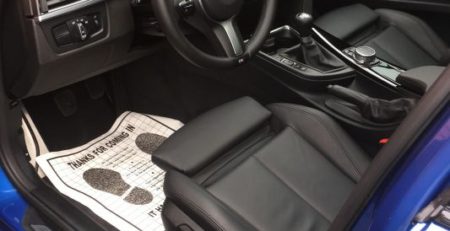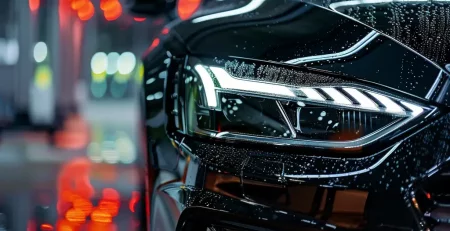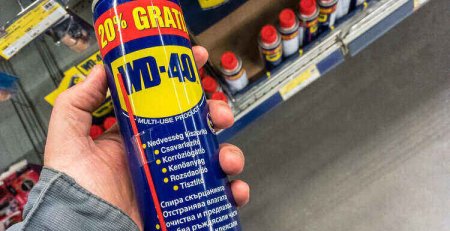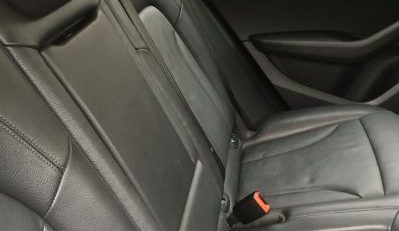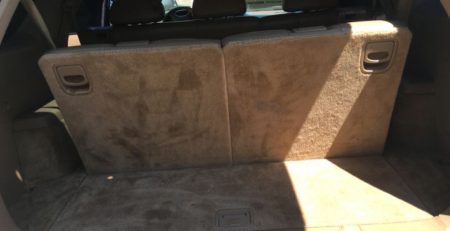How to Remove Paint Protection Film
My First Encounter with Paint Protection Film
The first time I came face-to-face with the paint protection film (PPF) on a car was when I bought my first classic – a 1978 Pontiac Firebird Trans-Am. The previous owner was a perfectionist and had the car covered in PPF to protect its original Starlight Black paint. It looked fantastic, but the film had seen better days and was starting to yellow and peel. It needed to come off, but I had no idea where to start.
Understanding Paint Protection Film
Before you dive into the process of removing paint protection film, it’s essential to understand what it is. PPF is a thermoplastic urethane film applied to painted surfaces of a new or used car to protect the paint from stone chips, bug splatters, and minor abrasions. It’s a fantastic innovation in the world of car detailing, but it’s not permanent. Over time, the film can take a beating and start to look worse than the paint it’s protecting.
Why remove it? You might want to replace it with a fresh layer, or perhaps you’d prefer to try a ceramic coating. Whatever your reason, it’s a task you can undertake yourself with the right instruction.
Gearing Up: Tools for the Task
You’ll need a few simple tools to remove paint protection film. A heat gun or hairdryer, a plastic scraper or squeegee, and an adhesive remover should do the trick. Some detailers also like to have a spray bottle filled with soapy water on hand. Remember, safety is paramount, especially when using a heat gun, so ensure you’re wearing adequate protection.
All these tools can be found easily online or in your local auto parts store. Don’t feel the need to splash out on the most expensive items – basic tools will do the job just fine.
Preparation is Key
The day I decided to tackle the PPF on my Trans-Am, I made sure I was prepared. I cleared the garage, laid out my tools, and made sure I had a clear working area. I knew it was going to be a messy job, and I didn’t want to make it any harder than it had to be.
Before you start, ensure your working area is clean and free from dust. You don’t want particles sticking to your car’s paint once the film is removed. Also, keep a bucket of soapy water and a pile of clean microfiber cloths nearby. You’ll be using them to clean off the adhesive residue.
Finally, remember that you’re dealing with heat and potentially sharp tools. Protect your hands with a good pair of gloves, and always work in a well-ventilated area. This isn’t a race – take your time, work methodically, and you’ll be rewarded with a clean, film-free finish.
Removing Paint Protection Film: A Step-by-Step Guide
Now that you’re equipped with the knowledge and tools required, it’s time to dive into the actual process. Here’s a step-by-step guide on how to remove paint protection film from your vehicle.
1. Apply Heat
Start by applying heat to a small section of the film. This softens the film and loosens the adhesive, making it easier to peel off. Be careful not to hold the heat gun too close to the paint – you don’t want to damage it.
2. Start Peeling
Once the film is warm, gently start to peel it away. Use your plastic scraper or squeegee to lift the edge, then pull the film slowly and evenly. If it’s particularly stubborn, reapply heat and try again.
3. Clean the Surface
Once the film is removed, you’ll likely be left with some adhesive residue. Use your adhesive remover to clean this off, then wash the area with soapy water. Dry it thoroughly with a microfiber cloth before moving on to the next area.
With patience, the right tools, and a little bit of elbow grease, you’ll find that removing paint protection film is a task well within your capabilities. And just like me with my old Trans-Am, you’ll feel a sense of satisfaction knowing that you’ve done it yourself.
Detailed Step-by-Step Guide to Removing Paint Protection Film
Start with Heat
Removing paint protection film begins with applying heat. The heat helps to loosen the adhesive holding the film onto the car’s surface, making it easier to peel off. A hairdryer or heat gun can be used for this purpose. However, be sure not to overheat the area as it could damage the car paint.
Gradual Peeling
Once the area is sufficiently heated, start peeling off the film slowly. Always remember to pull it back against itself at a 45-degree angle. Avoid yanking or pulling too hard as it could tear the film or damage the paint.
Apply Removal Solution
After the majority of the film is removed, there will likely be some adhesive residue left on the surface. Applying a removal solution will help dissolve this residue. The solution can be a commercial adhesive remover or a homemade mixture of hot water, dish soap, and white vinegar.
Scrape off Residue
Once the solution has had time to work, use a plastic scraper or old credit card to gently scrape off the residue. Make sure to do this gently to avoid scratching the paint.
Cleaning the Surface
After all residue is removed, clean the surface thoroughly with soap and water. Towel dry it to prevent water spots.
Possible Problems and How to Solve Them
During the removal process, you might encounter problems such as stubborn adhesive residue or minor scratches on the paint. For stubborn adhesive, let the removal solution soak for a longer period and then scrape off gently. For minor scratches, consider using a car scratch remover or seeking professional help.
Post-Removal Care and Tips
Inspect the Area
After the removal process, inspect the area thoroughly to ensure all residue is removed and there are no damage on the paint.
Restoring Original Paint Condition
If the paint appears dull after removal, use a car wax or polish to restore its shine. Always remember to test the product on a small area first.
Advice for Maintaining the Car’s Exterior Post-Removal
Maintain your car’s exterior by washing it regularly and applying a quality wax or sealant. Avoid parking under the sun for prolonged periods to prevent paint fading.
Frequently Asked Questions About Paint Protection Film Removal
Common Concerns and Queries
Some common concerns include damaging the paint during removal or not being able to remove all adhesive. Follow the removal guide carefully, and if you’re unsure, consider seeking professional help.
Myth Busting
One common myth is that you can’t remove paint protection film without professional help. While it’s true that professionals have the right tools and experience, you can certainly do it yourself with patience and care.
Promoting Further Reading and Learning
For those interested in learning more about car maintenance, there are plenty of resources available online. You can find detailed guides, video tutorials, and online forums where you can ask questions and learn from others’ experiences.




